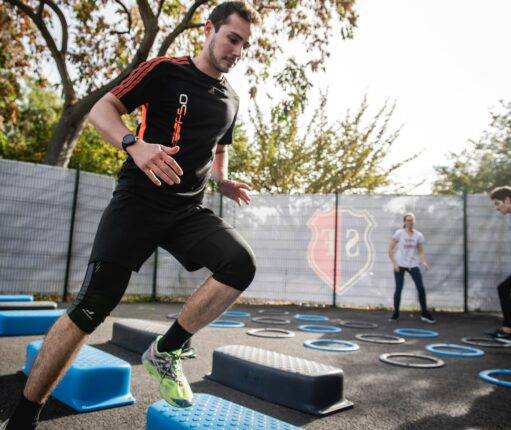In today’s rapidly evolving industrial landscape, workplace safety stands as a paramount concern for organizations worldwide. With the advent of advanced technologies, the sphere of workplace transport safety has witnessed remarkable transformations, aiming to mitigate risks and enhance operational efficiency. From automated systems to real-time monitoring solutions, the latest advancements in workplace transport safety redefine industry standards, ensuring a secure environment for employees and assets alike.
NEBOSH Course Fees
Before looking into the intricacies of technological innovations, it’s imperative to recognize the significance of structured safety training programs like NEBOSH. The NEBOSH Course fees represent an investment in comprehensive safety education, empowering professionals with the knowledge and skills necessary to navigate the complexities of workplace safety effectively.
Elevating Safety Standards
In Pakistan, the demand for rigorous safety standards has led to the proliferation of NEBOSH safety courses. These programs offer a holistic approach to safety management, equipping individuals with the expertise to identify hazards, implement preventive measures, and foster a culture of safety within organizations.
Now, let’s explore some of the latest technological advancements reshaping workplace transport safety:
1. Telematics and IoT Integration:
Telematics, coupled with the Internet of Things (IoT), revolutionizes fleet management and enhances transport safety. Through the integration of sensors and GPS technology, telematics systems provide real-time insights into vehicle performance, driver behavior, and route optimization. Fleet managers can monitor parameters such as speed, acceleration, and braking patterns, enabling proactive intervention to prevent accidents and optimize fuel efficiency.
2. Collision Avoidance Systems:
Collision avoidance systems utilize advanced sensors, cameras, and machine learning algorithms to detect potential collisions and alert drivers in real-time. These systems analyze the surrounding environment, identify obstacles or pedestrians, and issue warnings to drivers, thereby reducing the risk of accidents and minimizing workplace injuries. Moreover, some systems incorporate automatic braking functionality, mitigating the impact of human error and enhancing overall safety levels.
3. Autonomous Vehicles:
The emergence of autonomous vehicles marks a paradigm shift in workplace transport safety. These vehicles leverage cutting-edge technologies such as LiDAR, radar, and artificial intelligence to navigate complex environments autonomously. In industrial settings, autonomous guided vehicles (AGVs) streamline material handling processes, minimize human intervention, and mitigate the risk of accidents associated with manual operation. By adhering to predefined routes and safety protocols, AGVs enhance productivity while ensuring a safe working environment for personnel.
4. Predictive Analytics and Maintenance:
Predictive analytics empower organizations to anticipate potential safety hazards and proactively address maintenance issues before they escalate. By harnessing data from vehicle sensors and historical performance records, predictive analytics algorithms identify patterns, anomalies, and potential failure points, enabling timely interventions and preventive maintenance activities. This proactive approach not only minimizes downtime and operational disruptions but also enhances overall safety and reliability across the transport infrastructure.
5. Virtual Reality (VR) Training Simulations:
Virtual reality training simulations offer immersive learning experiences that replicate real-world scenarios and challenges. In the context of workplace transport safety, VR simulations enable employees to familiarize themselves with operating heavy machinery, navigating hazardous environments, and responding to emergency situations in a controlled and risk-free environment. By facilitating hands-on training and scenario-based learning, VR simulations enhance safety awareness, improve decision-making skills, and reduce the likelihood of accidents or injuries in the workplace.
6. Smart Safety Wearables:
Smart safety wearables leverage wearable technology and sensor-based monitoring to enhance employee safety and well-being. These devices, ranging from smart helmets to wearable biometric sensors, provide real-time feedback on vital signs, environmental conditions, and ergonomic posture, allowing organizations to identify potential health risks and intervene promptly. Additionally in NEBOSH Safety course in Pakistan, smart safety wearables can issue alerts in case of fatigue, dehydration, or exposure to hazardous substances, empowering employees to take proactive measures to safeguard their health and safety on the job.
Wrap up
Leveraging tech like telematics, collision avoidance, and VR training transforms workplace safety, boosting efficiency and fostering a culture of excellence. NEBOSH training equips pros to lead in utilizing these innovations for safer, more resilient workspaces.







